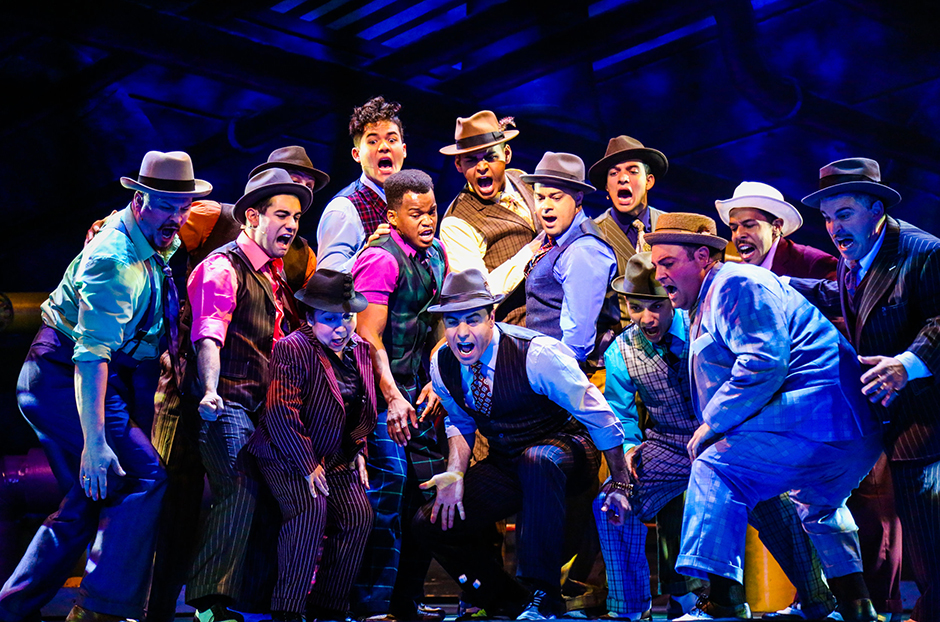“When I was living in Los Angeles as an actor, I was always asked to play the thug, the thief, or to act more ‘street’ on stage and over and over again I said ‘no,’ so for a while I didn’t work because of these stereotypical norms in theatre,” says Julio Agustin Matos, Jr., an assistant professor in the Department of Theatre Arts who is also a professional theatre director and choreographer.
Matos, who is of Puerto Rican descent and a Broadway performer in the original companies of Fosse, Steel Pier, Never Gonna Dance, Bells Are Ringing and Women on the Verge of a Nervous Breakdown, is no stranger to the stage, nor the opportunities (or lack of) that exist for minority actors who are trying to find acting parts that shy away from negative stereotypes.
Although contemporary Broadway productions like Hamilton, In the Heights, and Kinky Boots reflect today’s changing audience and can even entice younger people to Broadway, it’s the classic, Golden Age musicals that are confined within post-cultural concepts. But Matos sees beyond the normalcy—and has throughout his career in theatre and choreography.
Recently, he published a peer-reviewed article in the highly acclaimed Stage Directors and Choreographers Society (SDC) Journal, entitled “Braving the challenges of re-envisioning the classic musical for a new audience.” The article, published in the summer issue of SDC Journal, is a reflection of Matos’ time as a choreographer for a revitalized version of Guys and Dolls that played at Theatre Under The Stars (TUTS) in Houston, TX, in 2018.
During the weeks and months of casting calls, rehearsals, community engagement workshops, and planning and preparing for opening night, Matos observed the creation process from start to finish while working with the show’s director and theatre crew. His article identifies four major goals in four areas—casting, choreography, community engagement, and critical response—that are challenging when it comes to making classic musicals accessible to modern audiences.
“I would journal about what I was seeing during the production process of Guys and Dolls, and then afterward I sifted through the notes, conducted research, and analyzed what other scholars were saying about re-envisioning classic productions for a new audience, and the final result was this article,” Matos says. “We didn’t want to change Guys and Dolls in a way that would offend people, but also wanted to respect tradition while opening it up to today’s diverse audience.”
When it came to casting, Matos says the “number of talented triple-threat performers of Latinx ethnicity that attended our Guys and Dolls invited and open auditions was inspiring.” The choreography was also an important aspect of the production, especially for Matos who incorporated social Latin dance styles—like capoeira—into the production, as well as authentic ballroom and traditional theatre dances. It was a way to showcase the “stylistic intentions and shared skills of many of the actors from Houston’s Cuban, Mexican, Honduran, and El Salvadorian communities,” Matos states in the article.
Matos also examined the theatre’s community outreach programs and partnerships between the theatre company and outside organizations, which allowed the production to feature talented Latinx performers from within the Houston community. The theatre held children’s workshops with cast members, which allowed the children to interact with performers who looked like them.
The critical response to the show was another hurdle Matos examined after post-production. He states that the negative reviews “superseded” the positive responses; “such contradictory responses confirm the need to continue developing this type of project. Not every decision will yield solely positive response, but a lack of change simply perpetuates a status quo—something we cannot afford.”
“I’m writing to peers, theatre scholars, and other experts in theatre departments across universities about what is happening and what is shifting in theatre today, and how we can make it better,” says Matos. “This article showcases what worked and what didn’t, and I hope it helps those in theatre to take a chance and not be afraid to transform these classic productions for today’s more culturally diverse audiences.”

